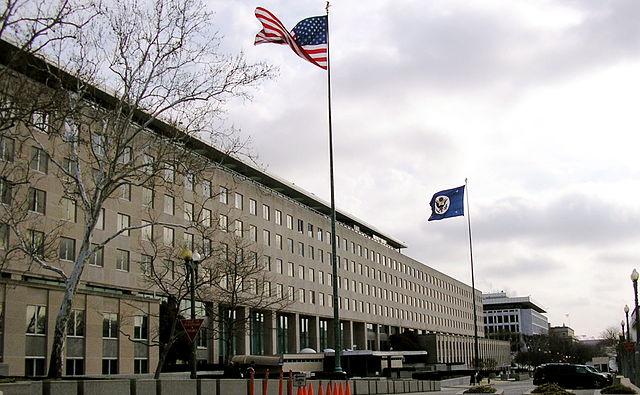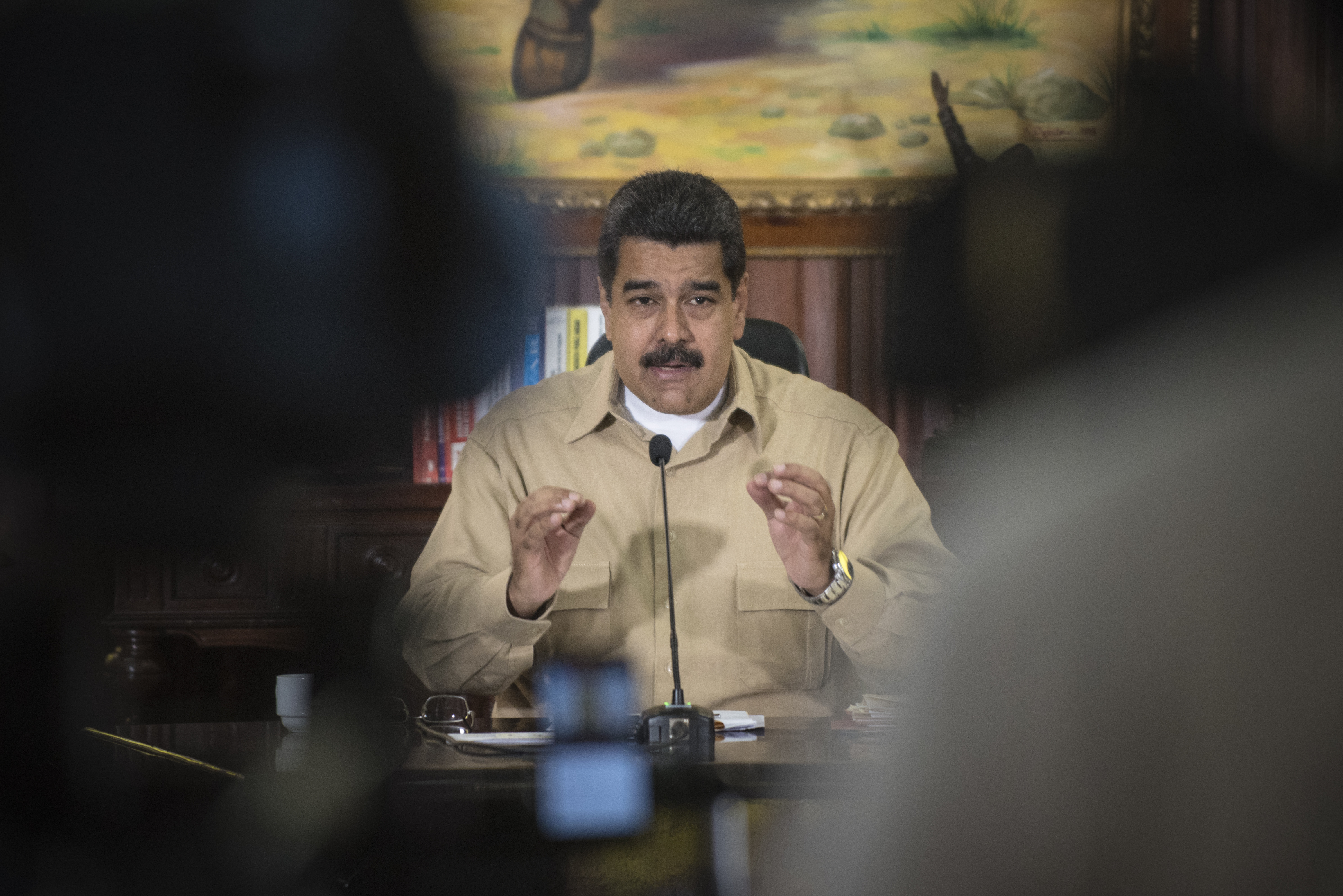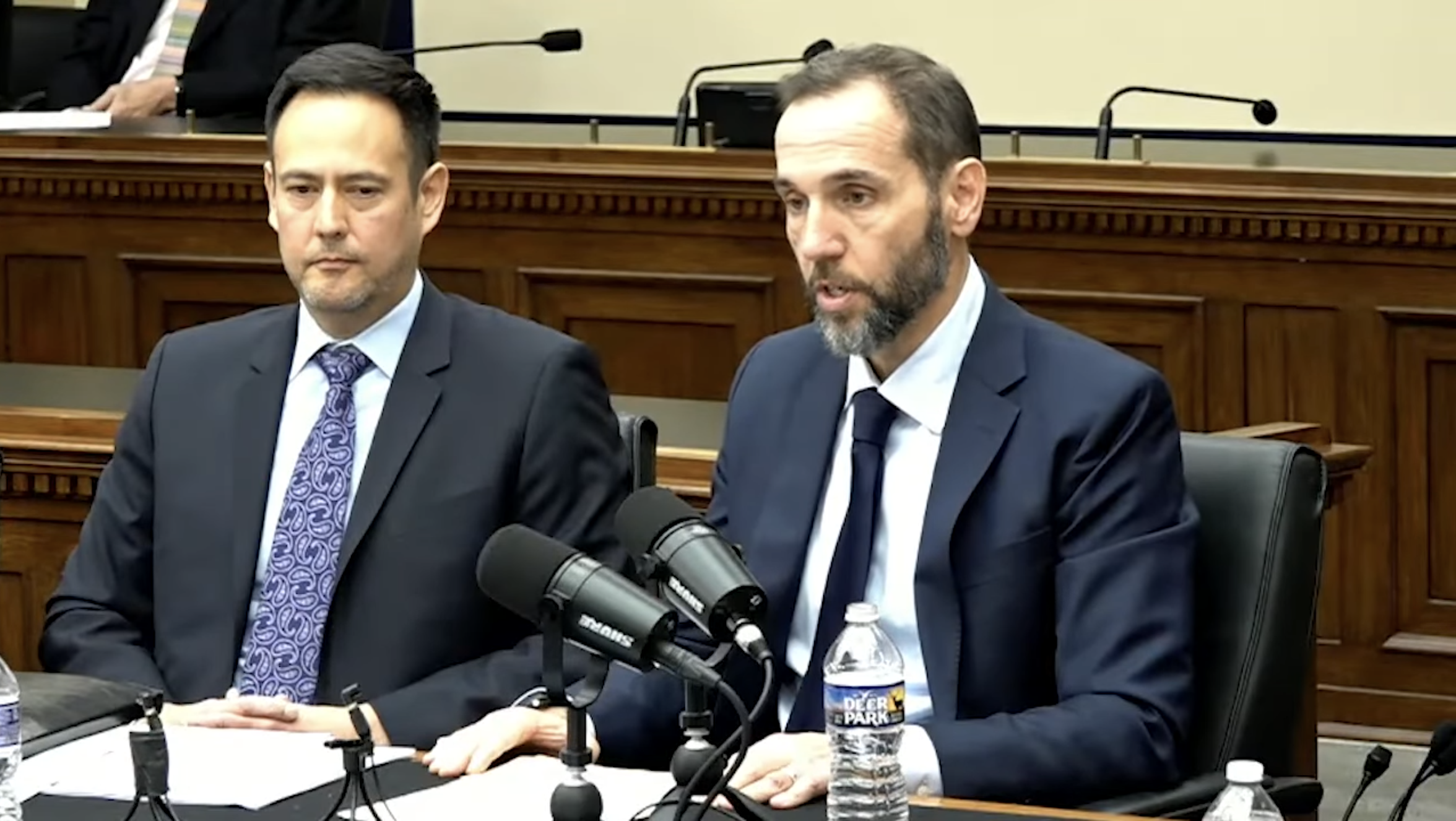The “Deep State” Myth and the Real Executive Branch Bureaucracy
A pernicious narrative persists today among fans and critics of executive power alike, which goes something like this: the real power in the U.S. government lies not with the elected President, not with his politically appointed cabinet officials, and not with members of Congress. That power rests instead in the hands of an organized network of nefarious, all-powerful, faceless bureaucrats. This stronghold of anonymous control, we are told, is the “Deep State,” the real power center in Washington.

Published by The Lawfare Institute
in Cooperation With

A pernicious narrative persists today among fans and critics of executive power alike, which goes something like this: the real power in the U.S. government lies not with the elected President, not with his politically appointed cabinet officials, and not with members of Congress. That power rests instead in the hands of an organized network of nefarious, all-powerful, faceless bureaucrats. This stronghold of anonymous control, we are told, is the “Deep State,” the real power center in Washington. According to many supporters of the current resident of the Oval Office, this “Deep State” is trying to undercut his presidency and his agenda, and thus the will of the American people as expressed in the 2016 election.
The Deep State narrative has picked up steam in the months since the election, in no small part because the President has himself sought to depict the actual bureaucrats inside his own government, often non-partisan career professionals, as his enemy. His supporters point to any example of bureaucratic resistance, real or imagined, as evidence of an organized scheme to undermine his administration. In so doing they adopt the language of some critics of executive power, generally of the political left, who in turn have borrowed the Deep State terminology from scholars of regimes like Turkey, Egypt, and Pakistan. These scholars, in turn, have used it to describe either the reality or fear in those states of an entrenched, typically military, power elite said to wield true authority, often using that power to promote its own business and political interests despite and without reference to the notional democratic superstructure that theoretically commands it.
Critics of executive power in this country have employed the Deep State rhetoric to describe varying degrees of concern. While there may be some who believe that a cabal of anonymous bureaucrats meets regularly in an underground bunker in Virginia to set the world agenda, other accounts use the term more loosely to identify what are probably better described as elite interests and power brokers, a quite possibly troubling but not terribly surprising—or secret—phenomenon, nor one that is unique to Washington. The most salient critiques of government decision making highlight concerns with the over-use of secrecy and classification. But the President’s supporters have sought to capitalize on these fears with a twist: their concern lies not with the protection of ordinary Americans from elite powerbrokers operating in secret, but rather with the protection of the President himself from ordinary career bureaucrats. And while most longstanding critics of the national security state have held transparency in governance as their primary objective, the President’s most significant concern seems to be not transparency, but leaks.
In appropriating the Deep State concept, the President and his supporters have attacked the career bureaucracy as disloyal, perhaps seeking to politicize its members in the process, thus denigrating the foundational norms of independence and nonpartisanship that they value. Reports suggest that the President’s top appointees have isolated themselves from the career officials within their own buildings, perhaps for fear of leaks, perhaps as much out of fear of disagreement. The downside to undermining this relationship is, of course, that these upper echelons of the administration are missing out on the expertise, the institutional memory and relationships, and the constant stream of information that these public servants on the front lines provide. It also means that senior political officials in the executive branch lack the ability to shape and direct the actions those career bureaucrats take. As a result, the public servants on the front lines have trouble getting political input and approval for their daily decisions, big and small. The country and the executive branch as an institution both suffer from the breakdown in this relationship. The President’s agenda will suffer as well, but not for the reasons he suggests.
The irony in the President’s paranoia over the “Deep State” is that it is not the expansive, non-partisan career bureaucracy that is subverting his Presidency and his agenda. It is his own high-level political appointees and advisers who are undermining him, aided in no small part by the President’s own incompetence and worst impulses. From his inner circle’s continuous autodial to the media over his destructive tendencies, to his own egregious disclosures of national security information, to his supporters’ apparent belief that tweeting disapproval at him is the only way to get his ear or that going rogue is the only way to self-protect, to his own national security advisers struggling to forestall damage from the President’s statements to our allies, the people surrounding the President–out of either self-interest or an effort to protect the country–are continuously undermining his authority and, perhaps, his agenda. As for those actions for which he may have support among his team, the President’s failure to install his own people throughout the executive branch will hinder movement on any real policy goals he may have going forward.
So then what about that dastardly career bureaucracy, twiddling its thumbs inside its sealed SCIFs from D.C. to Virginia? Do they share any of the blame? Let’s break down the reasons the Deep State is not out to get the President: First, assertions about a “Deep State” within the U.S. government do not begin to describe the reality of working for this large, disaggregated, messy bureaucracy. (In the interests of full disclosure, I formerly served as a career attorney with the U.S. State Department, the mother of all bureaucracies, where I worked for several years and across two political administrations.) Second, what the President sees as a resistance movement directed at him personally is largely, though probably not exclusively, what I call the “neutral friction” of a huge organization that does not change course on a dime, regardless of who sits in the Oval Office. And third, while it is exceedingly difficult for anyone to steer the mammoth executive branch bureaucracy, the President is himself making a difficult job impossible by not only failing to make his own appointments at every level throughout that bureaucracy, but openly antagonizing those individuals who continue to work in it.
The Deep State as such does not exist.
The Real Bureaucrats of DC likely find it partly amusing and partly bewildering that so much of the country imbues them, collectively, with such power, and such organized power in particular. They may also quite reasonably find it insulting that, having in many cases given up higher salaries and certainly better offices for the privilege of working long nights and weekends to serve their country through multiple presidencies across political lines, they are being painted as traitors or at the very least political hacks. But far from an organized cabal of conniving puppeteers, these faceless bureaucrats are just people like you and me. (And, as I mentioned, one of them once was me.) They go to work every day, put dinner on the table at night, procrastinate, gripe, and generally do the best they can at their jobs, whether or not they are enamored of their boss that day. There is a certain degree of organization among the career ranks, but look at an org chart: the real, organized ties between offices and agencies, and up from the line officials to the cabinet secretaries, are drawn through individuals who are politically appointed. As I’ll discuss below, those placements are within the President’s power to control. And at the moment, those seats are generally vacant, leaving those offices rudderless, often run by career officials trying to keep the ship afloat the best they can, at times without support or direction from or clear lines of communication to those above them.
For career public servants, even under the most smoothly-running Presidential administrations, trying to get anything done in the executive branch is a continuous exercise in banging one’s head against a wall and hoping that one day, many, many months and meetings and non-papers later, you may begin to notice the early stages of a small dent. Often as not, just as you are marveling at that dent, you will receive a phone call informing you that either the matter at hand has been put off indefinitely due to other competing matters, or that the Principals (cabinet secretaries) have just met and–without considering the full information produced by months of hard work by those on the front lines across the agencies–have arrived at a compromise solution that itself is not what any single agency actor would have chosen, given full facts and free choice.
For their part, the high-level political appointees on the other end likely find the process just as frustrating. They have few means of getting information themselves. They cannot possibly stay abreast of every single item, big and small, that requires action every minute of every day. File this brief, meet with this international counterpart, sign off on this set of benefits, approve this drug, respond to this email, write talking points for this embassy. They cannot possibly do it all. They don’t even know how to do most of it, and they must rely on the people who have been doing these very jobs for years, through multiple presidential administrations, to get the real work of daily governance done.
These sets of actors work together symbiotically, perhaps at times dysfunctionally, but neither can operate effectively without the other. These are not separate parallel institutions, one perfectly controlling the other, but rather interwoven threads of different types of power. While cabinet secretaries may reasonably sense they lack absolute control over their agencies’ every action, those holding onto any given sail are surely not steering the ship themselves.
Bureaucratic “resistance” is largely just neutral friction.
Perhaps unlike office workers elsewhere, career executive branch officials generally have a fierce commitment to nonpartisanship at work. This is not to say that individual career public servants are themselves apolitical, or that they are immune to views about any particular administration. The executive branch career bureaucracy is an enormous entity, and surely a good percentage of career public servants are no fans of many of the President’s positions, along with a good chunk of the country. So too were there many civil servants, from both the right and the left, as well as a large swath of the country, who did not agree with many of the last President’s policies. This President in particular is likely to face more resistance than others, not because of his politics per se, but because his actions are so outside the norm of what the average bureaucrat has come to expect from political leadership, and because his open hostility and attempts at politicization of the bureaucracy may leave individual career officials reasonably suspicious about his motivations and hesitant to leap instantaneously to effectuate his every dictate.
But partisan politics are not the reason the bureaucracy is notoriously hard to manage, nor is bureaucratic intransigence a politically lopsided problem, though certainly different agencies have different entrenched proclivities. What Trump feels as resistance directed at him personally is predominantly what I have called the neutral friction of the vast gears and levers of the executive branch machinery resisting dramatic change. And this neutral friction afflicts all Presidents.
The vast majority of bureaucratic resistance to a President’s agenda is neither organized nor hostile resistance so much as a tendency toward continuity of the status quo. Absent clear direction that they should do otherwise (and it is exceedingly hard to get that direction when the President has not yet installed appointees throughout the government), career public servants will carry on and continue to do their jobs. For a President determined to undermine every executive branch norm, perhaps that looks like a slap in the face. The U.K. Embassy expressing condolences to the Mayor of London in the wake of a terrorist attack is what passes for resistance these days. The President has continuously taken actions so outside the norm that executive branch officials may be wrong to assume he wishes them to continue carrying on with the most anodyne of executive branch functions. The neutral friction of the executive branch will pose greater resistance the more an actor tries to change course from the status quo, but that does not make it organized or hostile action directed against the President.
Effectiveness requires filling out the middle ranks.
The most effective Presidents know that to succeed in promoting their policy agenda they both have to hire good people who agree with their mission to fill every political job throughout the executive branch, and have to work well with the career bureaucracy. At the moment this President does not appear to be making significant effort in either direction. He has alienated the bureaucracy, but he has also failed to place his own people throughout, either because he does not understand the importance of filling those positions or because he cannot find people willing to take them, or both. That this is limiting his eyes, ears, and hands throughout the bureaucracy is not the fault–or the will–of that bureaucracy.
Consider the entire middle ranks of the State Department, which have been decimated. By my last count there were 61 ambassadorial positions vacant, including to the U.K., France, Germany, NATO, and Saudi Arabia, with very few nominations pending. Those buildings are run in the meantime by career officials, as is the office that protects them, because the President has failed to install a head of Diplomatic Security. Nearly all of the undersecretary positions are vacant, and career officials serve as acting heads at the Bureau of Near Eastern Affairs and nearly all bureaus throughout the Department. This phenomenon persists across the executive branch.
When adequately staffed, it is this upper middle tier of the bureaucracy–similar to what Dan Carpenter has called the “mezzo level”–where so much of the power to get things done truly lies. It is no accident that it is in the Deputies’ Committee, not the working groups, and not the Principals’ meetings, where much of the clear-eyed decision-making happens. Individuals in the middle ranks are close enough to the front lines to have granular expertise and institutional competence, but they are high-level enough to have real power to make decisions. They may be career officials, they may be political appointees–and often the difference lies in the will or ability of the President to fill these positions–but they are not typically anonymous. In order to be effective, they often must step out in front, put their name behind a position, sign the memo, speak to the press, take real accountability for their actions. That accountability is the opposite of the secretive, mythical Deep State.
We should challenge specific breakdowns of that accountability when we see them, and those breakdowns do occur. Insufficient transparency about executive branch positions and decision making is a real problem. As but one example, many of us have long raised concerns over the Executive’s legal theory for using force under the AUMF, and have argued that the public and Congress should demand more information regarding with whom we are at war under that statute. But conspiracy theories about a Deep State do not aid in that endeavor. Moreover, it is not the President who is the victim of those harms; it is the public, individual liberties, and the ideal of good government. Neither individual rights nor public access to information appear to be the President’s or his supporters concerns when they rail against the career bureaucracy.
The best bureaucratic actors understand that to make the system work is hard enough–to make change is nearly impossible, and it requires learning how to negotiate and work with the many components of the state. It doesn’t always work, and sometimes it works only part-way and at a snail’s pace. But it certainly does not easily happen by Presidential fiat alone. Ask President Obama about his plan to close Guantanamo within a year of taking office.
The President can dash off a tweet, or even an Executive Order, but those who try to carry out his policies will have to address all the complexities that come along with that. Drop out of Paris? Okay, but what are the implications? Will we still go to go to meetings and talk to our counterparts? Also, by the way, does anyone here know how to terminate a treaty? Tweet that Qatar is a bad actor? Okay, but what about our military base? What should we tell American citizens and businesses based there, not to mention our soldiers? Do we have talking points for the Embassy or Department of Defense or instructions for going forward? This information exchange cuts both ways–often, when high-level officials learn more about the complex reality of their proposed course of action, that may–and should–cause them to slow down and consider the extent to which their opening position is the best course. At times, what may look like resistance is in fact policymakers themselves re-examining their own positions. That may be frustrating to those on the outside who wish to see immediate change. Nevertheless, that does not a conspiratorial Deep State make.
In this President’s case in particular, the simple reality that the vast and various components of the executive branch bureaucracy do not immediately leap into action to effectuate a policy levied by tweet, which the public servants seized with that matter (not to mention the President’s own advisers) may not fully understand, on which they have been given no guidance how to effectuate, and which may change in the next instant, does not mean that a cabal of bureaucrats is controlling the government. The reality is far more subtle and complex, and perhaps harder to contemplate–that surely the disparate limbs of the bureaucracy are not pulling the strings, but neither is the President alone, nor has he ever. That is one norm that will not be so easily broken.




_c.jpg?sfvrsn=9bbcc085_3)
